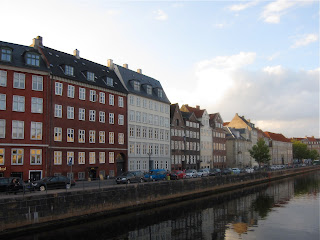Last weekend we went up to Copenhagen, Denmark, to meet some friends who were there for a week. I wish we could have spent more time with our friends, but our schedules only allowed us to overlap for a day or so. We did manage to fit in plenty of time playing with their adorable baby girl and a delicious dinner at El Meson.
We stayed in an apartment that we rented through AirBnB. We’ve used this website to find apartments for a number of our trips, but this was one of the best places we’ve found so far. The apartment was very cute and had an amazing view.
We stayed in an apartment that we rented through AirBnB. We’ve used this website to find apartments for a number of our trips, but this was one of the best places we’ve found so far. The apartment was very cute and had an amazing view.
Kødbyens Fiskebar was very sleek and elegant, with modern seafood dishes. It is in Copenhagen’s meat-packing district, which was an area we had not visited previously. I mapped out the most direct route from our apartment to the restaurant and after passing by some of Copenhagen’s gorgeous canals and the Tivoli Gardens, we found ourselves in a strangely desolate area.
As J said, it looked kind of like where people would go to dump dead bodies. Luckily we were able to use the maps stored in my phone to make our way back to civilization and to the restaurant. We were a little early, so we grabbed a beer at Mesteren & Lærlingen (a neighboring bar) before going to dinner and enjoyed how much the bar (and its hipster clientele) reminded us of the Hideout in Chicago.A few days in Scandinavia was an interesting change of pace from France. J had been to Copenhagen before, but I had never been north of Frankfort in continental Europe. I loved Copenhagen. People were so friendly and everyone spoke English fluently. It was so clean, uncrowded, and the look was very different from what we are used to here because of the canals and harbors shaping the city. It is still amazing to me how many different places are in such a small geographic area. Going from Paris to Copenhagen, Barcelona, or Florence, the food, language, architecture and culture change (sometimes dramatically), but all of those flights are shorter than going from Chicago to New York.
Here are a few of the (many, many) pictures we took of the city.















































